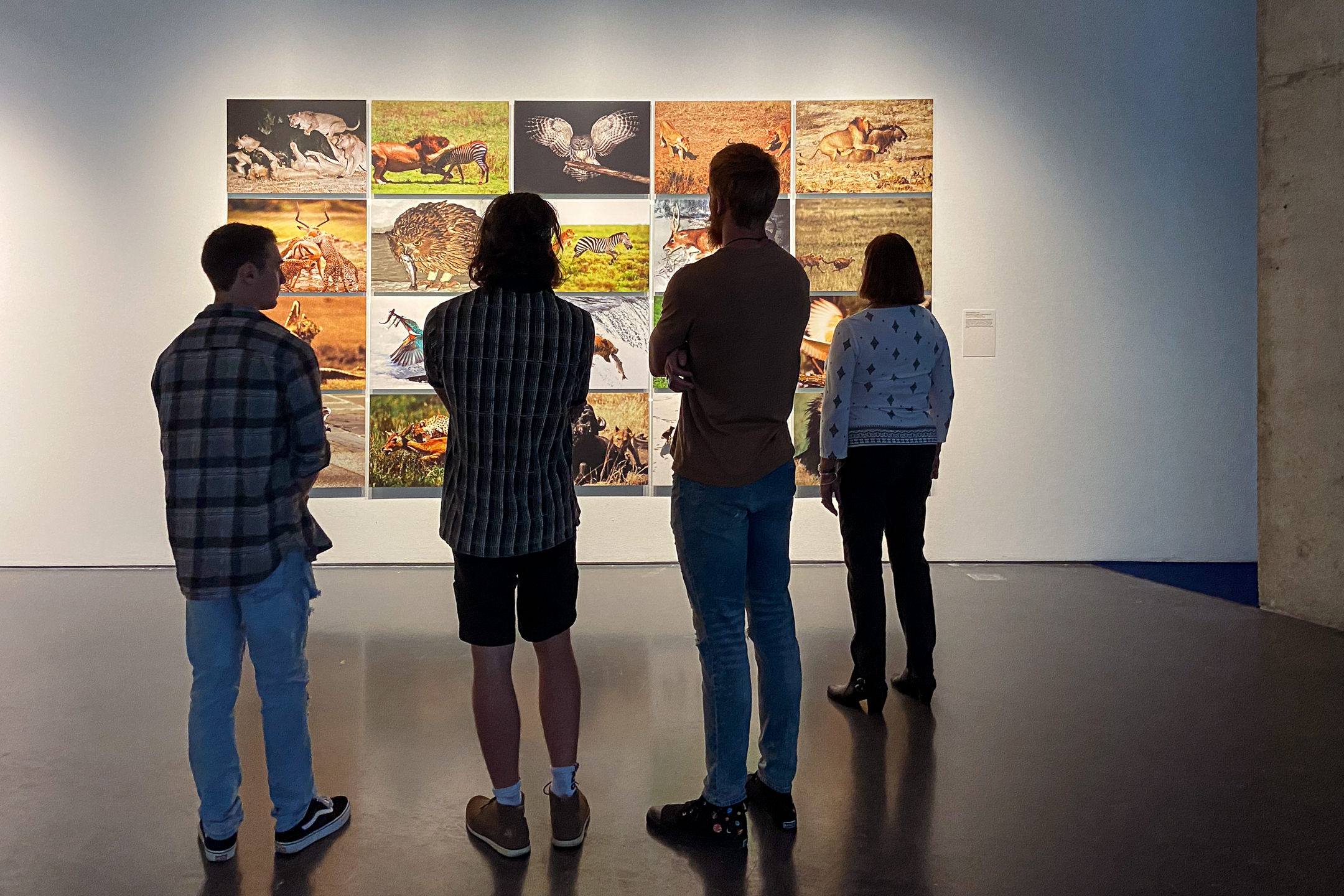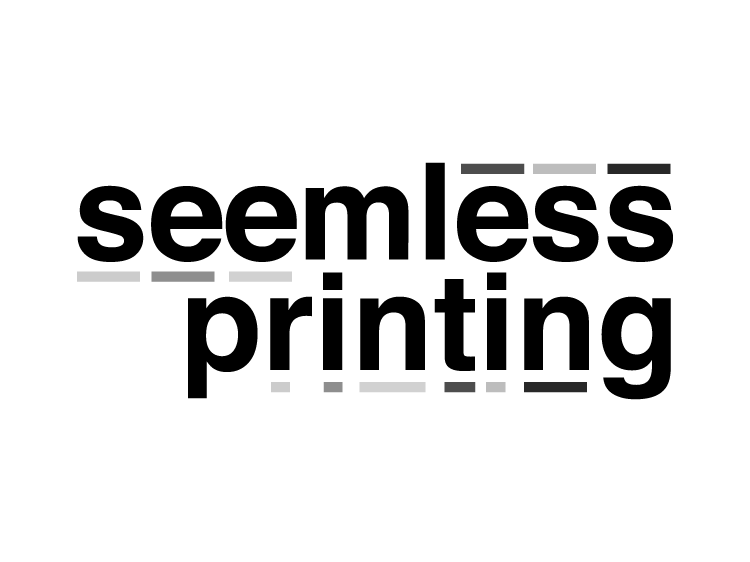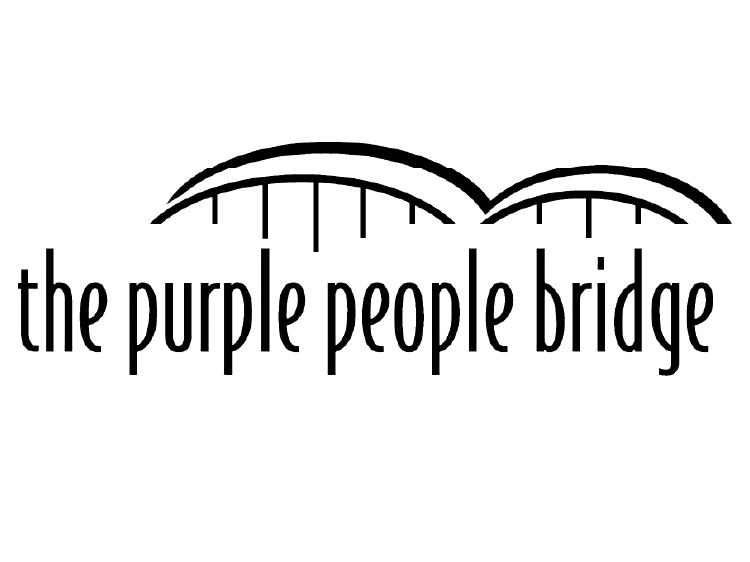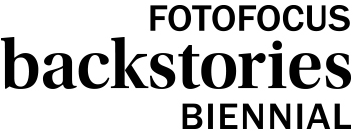2024 FotoFocus Biennial Overview

The largest photography and lens-based biennial in America, the FotoFocus Biennial is in a category of its own. Now in its seventh iteration, the 2024 Biennial encompasses 107 projects at 86 Participating Venues across Greater Cincinnati, Dayton, Columbus, and Northern Kentucky.
An ambitious collaboration between FotoFocus and the region’s museums, galleries, universities, and non-traditional spaces, the FotoFocus Biennial is a month-long celebration of photography and lens-based art that unites artists, curators, and participants from around the world. This year’s Biennial presents 15 Featured Projects, including an international touring retrospective, a multi-venue celebration of an artist featuring a new commission, rare and never-before-seen photographic works, new research and insight to expand understandings of artists, and a Call for Entry Selection category, along with a wide range of original exhibitions, events, and projects, all centered around the theme of backstories.
The 2024 Biennial theme, backstories, focuses on stories that are not evident at first glance. These stories offer context for what happened previously or out of view, providing narratives not yet told or presented from a new perspective. Yet once told, they shed light on current circumstances and events.
The 2024 FotoFocus Biennial Opening Weekend Program, September 26–28, 2024, constitutes the core of the Biennial, establishing the theme and dialogues that unite the broader programming. Featuring keynote lecture, talks and panel discussions with artists, curators, and collaborators, receptions, and tours, the Biennial Program is designed to inspire conversations about the world through photography and lens-based art. Additional Biennial programming for Featured Projects and Participating Venues continues throughout the month of October.
While many Participating Venues are free and open to the public, the FotoFocus Passport offers free access to special exhibitions during the month of October; invitations to members-only events; and entry into the FotoFocus Biennial Opening Program.

About the Theme
Each FotoFocus Biennial is structured around a unifying theme. The 2024 FotoFocus Biennial theme, backstories, focuses on stories that are not evident at first glance. These stories offer context for what happened previously or out of view, providing narratives not yet told or presented from a new perspective. Yet once told, they shed light on current circumstances and events. Backstories fill in where the evidence ends, adding nuance, solving mysteries, or simply telling us something we need to know.
To some extent, all histories are backstories. Histories emanating from archives, discovered through reporting, or revealed through gossip provide essential contexts for understanding a given photograph. Similarly, series of photographs have built-in backstories, offering greater context for those singular images we tend to valorize as “telling the whole story.”
In all these instances, what is visible on the surface—what is easily photographed—is enlarged and enriched through an understanding of broader histories, by seeing beyond what is evident, by knowing the backstories.

Director’s Statement
Everyone and everything has a backstory. People are full of them: they are the fuel for any cocktail party and are often the fodder that allows us to learn, connect, and open ourselves to others. While some stories we love to share, others we keep on reserve. Some backstories are so well known that they become a communal memory, perhaps considered a historical record. But every tale, like every photograph, is created from a certain perspective: while it may highlight some things, it can equally obscure others. There are many other stories, narratives, and histories waiting to be heard, that have been relegated in the shadows, be it by others speaking louder or structural systems that have kept them at bay.
The 2024 FotoFocus Biennial: backstories is a thoughtful consideration of what is visible and hidden: what happens outside the picture frame that changes our understanding of an image? Conversely, how can a photograph challenge our preconceived notions of an event, person, or historical truth? How can an expanded view cause us to think critically and empathetically?
The theme backstories developed in part as a response to the wonderful range of projects presented during the 2022 FotoFocus Biennial: World Record. Participating Venues demonstrated interest in contemporary concerns related to the Covid-19 pandemic, social justice, and the climate crisis, highlighting a variety of issues, bringing relevant but often hidden histories to light. While FotoFocus develops a thematic framework, it is remarkable how the creativity and interpretation by our Participating Venues can redefine our understanding of the theme. This year is no different, and you will note a myriad of interpretations of this theme as you review the 107 projects at 86 venues across the region.
Not only is this the largest Biennial to date, but backstories also introduces a new initiative. While our structure often works directly with organizations who develop their own programming, this year we also put out a call for independent, regional creatives to respond to backstories. The six Call for Entry Selections highlight family narratives that define us, tell the stories of regional immigrants, spotlight BIPOC communities in the Midwest, reveal the rich history of artist-run spaces within Cincinnati, and much more. Together, these projects present a focused lens centering our locality within the Biennial in a nuanced way.
This year’s Biennial Featured Projects are a strong visualization of backstories. Several of these projects are in-depth solo exhibitions that provide new insight and consideration, featuring the artists Ansel Adams, Rotimi Fani-Kayode, Barbara Probst, Ming Smith, and Chip Thomas. Additional Featured Projects present group exhibitions that demonstrate the impact of William Eggleston’s portfolio Election Eve, or, in Memory Fields, artists consider the intertwined relationship of culture, place, and memory. Together, these projects demonstrate the power of framing, perspective, and what can be gleaned from taking a longer view.
I strongly believe that the strength of the FotoFocus Biennial stems from the multitude of voices that present both familiar and unknown ideas, all through the lens of photography. While reviewing the Biennial webpages, I hope you discover a variety of projects and exhibitions in which you reconsider familiar ideas as well as expand your horizons.
Katherine Ryckman Siegwarth, Executive Director

Curator’s Statement
Here is a little backstory on the 2024 Biennial theme: backstories that came to mind as I thought about all the ways photography brings us the world, revealing its strange wonders, yet often leaves us with more questions than answers. A good photograph will pique our interest, but rarely does it offer a complete explanation. What happened before or after the photograph was taken? What was happening outside the frame? This year’s theme speaks to that fundamental aspect of the photograph as a slice of time, an instant snatched out of the eternal flux. “There is nothing as mysterious as a fact clearly described,” Garry Winogrand once famously said. So often it feels like the more we see the less we comprehend. We need the backstory.
Backstories also come into play in our deciphering of the world—specifically, our mediatized world, where photographs volley for our attention amidst a constant din of advertising, news, and entertainment. We’ve all become aware of the ways in which photographs can “lie.” We know that the images we encounter in the media have been carefully selected and sometimes altered to influence or sway opinion. As a result, we are astute scrutinizers of photographs, searching for greater truths beneath the surface. We no longer take photographs at face value, understanding that there is usually more than meets the eye. Again, we look for the backstory.
This year’s Biennial offers a broad array of photographic backstories. There are historic backstories, in which the past sheds light on the present. Southern Democratic (The Carnegie) looks at presidential elections of the past through the lens of William Eggleston’s series Election Eve, which offers a jumping off point for contemporary artists meditating on the fast-approaching 2024 election. Artist Run, at various venues in Cincinnati, digs into the archives and presents the history and legacy of artist-run spaces to reveal how they have evolved and contributed to the local arts scene over the years. Similarly, Discovering Ansel Adams (Cincinnati Art Museum) offers a new perspective on the legendary creator of mountain views and the zone system, presenting personal possessions and handwritten correspondence in tracing the photographer’s journey from young mountaineer to pillar of art photography.
Some of the backstories are even more emphatically personal, revealing the paths artists have taken to become who they are. Michael Coppage revives a fictional character he created 20 years earlier in an exhibition titled Humphrey Gets His Flowers (Art Academy of Cincinnati: Site1212), a show honoring the alter-ego of Coppage’s youthful insecurities. Ming Smith revisits her past in various exhibitions in Columbus, Ohio, the artist’s home town, spinning a compelling narrative of personal achievement and self-reconciliation. Rotimi Fani-Kayode: Tranquility of Communion (Wexner Center for the Arts) offers the first extensive museum presentation of the late Nigerian-British photographer’s imaginative exploration of his own complex identity before his life was cut short by AIDS.
Some of the backstories reveal hidden social circumstances not readily visible to the public eye. Having spent the past 30-plus years in the Navajo Nation, Chip Thomas (Contemporary Arts Center) has produced photographs and street art that acknowledge both the spirit and hardship of the people of his community. Similarly, More than Meets the Eye (Purple People Bridge) tells the stories of local immigrants through family photographs, audio stories, and music. Rachael Banks also examines family life, focusing on Central Kentucky, in a show titled The Trail of the Dead (Alice F. and Harris K. Weston Art Gallery), using white-tailed deer as metaphor. Two shows, Another First Impression and Digressions (both Art Academy of Cincinnati: Site1212), take a nuanced view of personal relationships within the region, examining communities of color and friendship, respectively, as lives navigated in both public and private spaces.
Finally, backstories can also be purely technical—how was the work created? For the past 25 years, German photographer Barbara Probst (Contemporary Arts Center) has developed a unique technique, producing simultaneous, multiple perspectives of a single scene. Her multi-frame photographs act as visual puzzles, inviting viewers to piece together the technical apparatus while considering the philosophical implications of point of view. Psychological puzzles are explored in Memory Fields (Alice F. and Harris K. Weston Art Gallery), which traces the transmission of cultural traditions and ritual through the nebulous matter of personal memory, translated through the medium of photography.
It all really comes down to point of view. There are the stories, the official version of knowledge, which is what photographs customarily offer. And there are the backstories, the added layers of knowledge—the contexts, the details, the secrets—that create the fuller picture. We hope backstories offers a generative way of looking at the diverse artists and exhibitions on offer in this year’s Biennial, and we hope, more importantly, a generative way of looking at our world through photographs.
Kevin Moore, Artistic Director and Curator
FotoFocus Biennial History
Launched in October 2012, the FotoFocus Biennial is a month-long celebration of photography and lens-based art held throughout the Greater Cincinnati, Dayton, Columbus, and Northern Kentucky region every two years. The Biennial is the largest of its kind in America and has featured more than 2600 artists and participants, and 750 exhibitions and programs throughout its history. The Biennial is centered around a unifying theme and the cooperation of museums, galleries, academic institutions, and non-traditional spaces, in celebration of the FotoFocus Month of Photography.
The FotoFocus Biennial Opening Weekend Program constitutes the core of the Biennial, establishing the theme and dialogues that unite the broader programming. Featuring keynote lectures, conversations, screenings, and receptions with international participants, the Biennial Program is designed to inspire conversations about the world through photography and lens-based art.
2022 FotoFocus Biennial: World Record
The sixth iteration of the Biennial presented major new artist commissions and a wide range of original exhibitions and events, featuring over 100 projects centered around the theme of World Record. The theme considered photography’s extensive record of life on earth, humankind’s impact on the natural world, and the choices we now face as a global community.
2020 FotoFocus Biennial: light&
In lieu of presenting the fifth FotoFocus Biennial, light&, FotoFocus pledged its 2020 Biennial budget to financially support the region’s art community during the coronavirus pandemic. FotoFocus distributed Emergency Art Grants totalling $800,000 to over 100 Participating Venues and Partners that were selected to present as part of the 2020 FotoFocus Biennial.
2018 FotoFocus Biennial: Open Archive
Open Archive emphasized the centrality of photography and lens-based art to modernism, and examined our fundamental need to preserve photographs and to tell stories through their collection, organization, and interpretation. Featuring 90 Biennial projects and a comprehensive film program, the 2018 Biennial also included FotoFocus curated exhibitions with artists Eugène Atget, Berenice Abbott, Karl Blossfeldt, Bruguière, Thomas Ruff, Mamma Andersson, Akram Zaatari, and Chris Engman, among others.
2016 FotoFocus Biennial: Photography, the Undocument
Featuring over 60 exhibitions and over 100 FotoFocus events at Participating Venues, the 2016 Biennial included eight major exhibitions curated by FotoFocus Artistic Director and Curator Kevin Moore exploring the documentary nature of photography, including solo exhibitions of Roe Ethridge, Zanele Muholi, and Jackie Nickerson. The Biennial Program included four days of events, lectures, and screenings.
The Participating Venues took diverse approaches to the theme: Photography, the Undocument, which seeks to break apart assumptions about photography’s documentary character by emphasizing the medium’s natural tendency to distort and reshape the visible world.
2014 FotoFocus Biennial: Photography in Dialogue
The second edition of the Biennial, hosted in October of 2014 and centered around Washington Park, included six original exhibitions curated by FotoFocus, the premiere of the FotoFocus ArtHub, as well as exhibitions by over 60 Participating Venues throughout the region. The FotoFocus featured programming included five days of lectures, panel discussions, screenings, and performances with curators, critics, and art world professionals, all focused on one common theme: Photography in Dialogue. FotoFocus welcomed over 115,000 visitors to the Biennial.
2012 FotoFocus Biennial: People. Places. Photography.
In October of 2012 the FotoFocus Biennial became the region’s first event to bring together over 60 venues to simultaneously present contemporary and historical photography, as well as artistic and educational programing. The inaugural event welcomed 63,000 visitors to the FotoFocus Biennial 2012.
Partners


















#FotoFocus #backstories #FotoFocus2024
